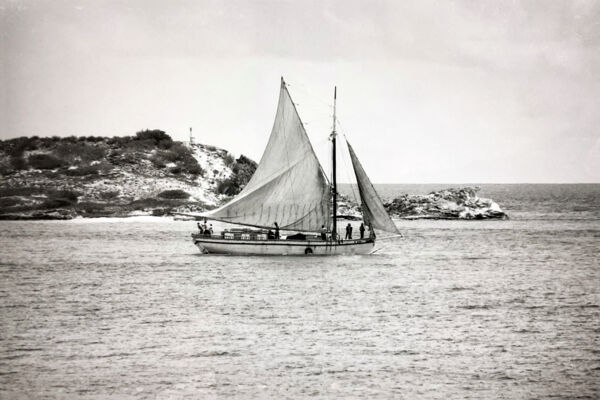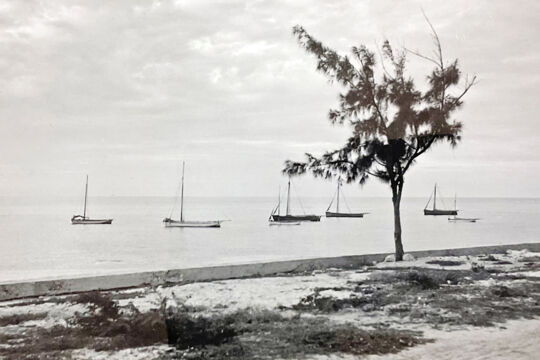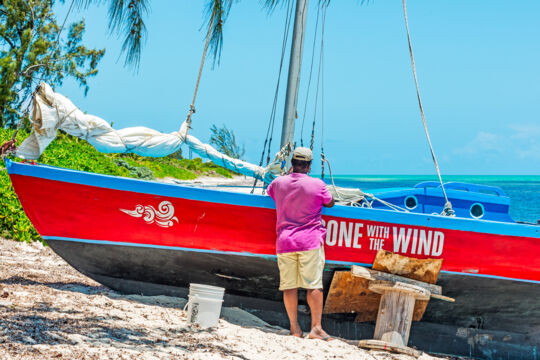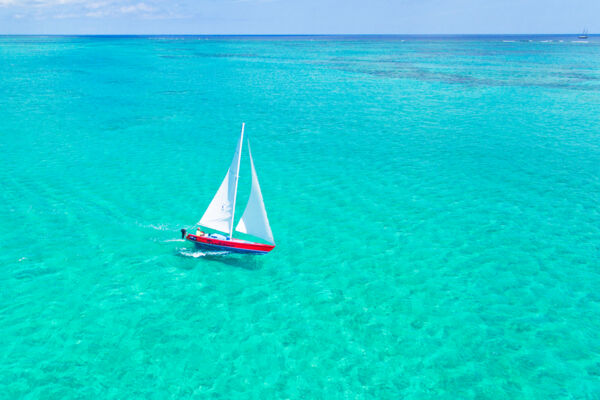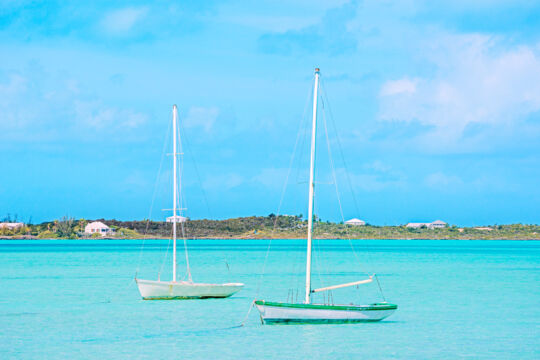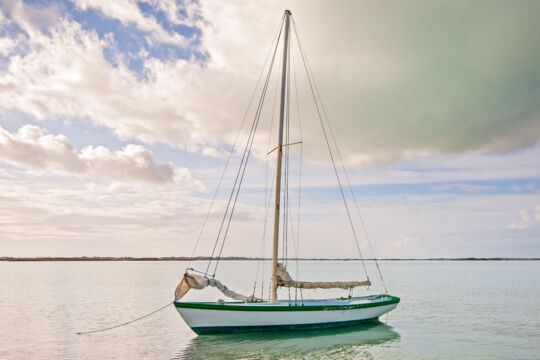The Caicos Sloop
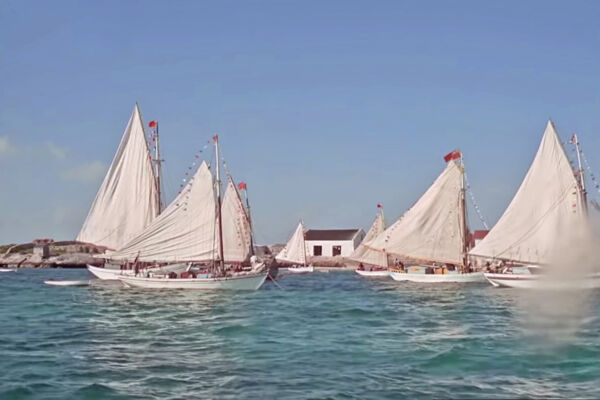
Few icons are more authentically Turks and Caicos than the Caicos Sloop. These small hand-built sailboats were the mainstay of transport, trade, and fishing in the country until the advent of the powerboat in the islands in the latter 1900s.
The coastal settlement of Blue Hills on Providenciales is the best place in the country to sight one of the few remaining Caicos Sloops still seaworthy.
As rather small vessels, length rarely exceeded 30 feet (9 meters), however, 50-60 feet footers (15-18 meters) were occasionally built to trade with the Bahamas, Haiti, and the Dominican Republic.
At the height of the era, dozens of boat builders were found across all of the main inhabited islands in the Turks and Caicos. Probably due to the availability of larger trees, North Caicos, Middle Caicos, and Providenciales supported the greatest number of builders.
The Origin of the Caribbean Sloops
Many of the Caribbean and tropical Atlantic countries have had a past of small sloop building, and designs are generally surprisingly similar.
Almost all of these sloops are closely derived from French, English, Portuguese, and Spanish patterns from the 1700s, and in fact the trade was largely brought to the Caribbean by indentured European servants and emigrants.
Today the wooden sloop is only regularly still used as a work vessel in a few relatively impoverished nations, such as Haiti.
A Disappearing Tradition
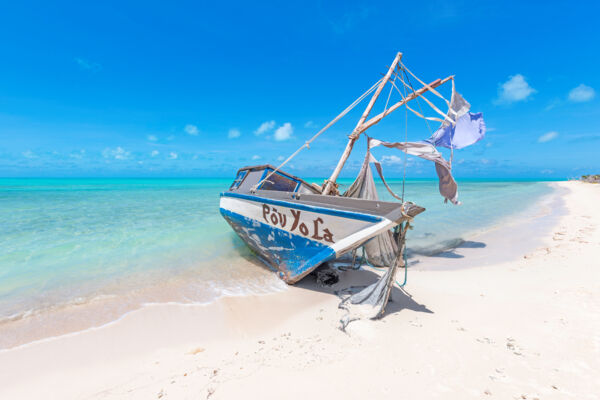
As has been the course across the globe, the sailboat has almost entirely been replaced by the powerboat in the Caribbean as a vessel for commerce and industry.
Small fiberglass and wood skiffs, made in the region and outfitted with 15-90 horsepower outboard motors, have overtaken the small-scale fishing industry in the Turks and Caicos. For trade and transport, larger internationally made steel vessels are now the choice.
Along with the Caicos Sloops themselves, the knowledge and skills required to build the vessels, passed down through generations, have also faded.
The 2016 documentary Vanishing Sail follows a strikingly similar narrative of the Carriacou Sloops in the Grenadine Islands, the design, construction, and culture of which is almost identical to the Turks and Caicos variety.
Today, only a few elderly Caicos Sloop builders still remain.
Building a Boat
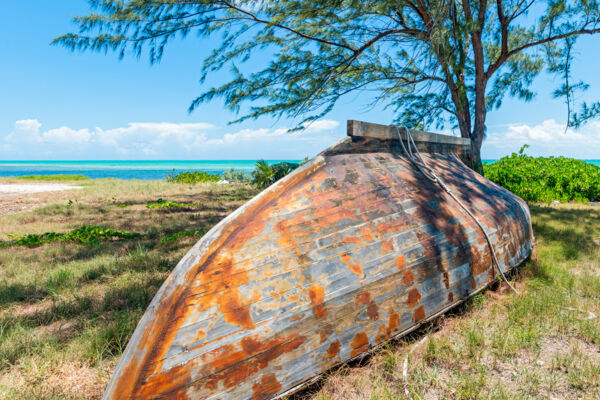
The sloops were built by hand according to a frame and plank design, and until the final decades of the Caicos Sloop’s heyday, hand tools were used for the entire construction.
Rough lumber for hull frames were usually carefully chosen and naturally curved branches, which the frames were then hewn from. This results in a relatively simple yet sturdy vessel. Indigenous West Indian mahogany and West Indian locust was the common wood choice for this task. In fact, at very remote locations such as at Frenchman’s Creek or on the southern coast of North Caicos and Middle Caicos, it’s still possible to see the occasional rough-hewn frame rib or keel from past days
Often too large to be completely cut from a single piece of local lumber, the keel also was formed from naturally curved tree trunks.
Planking initially was sourced from the Caicos pine forests of North Caicos, Middle Caicos, and Pine Cay. As trade increased with neighboring countries, dimensional lumber gradually began to be imported instead. As the consistently straightest trees in the islands, pine was typically used for masts and spars as well.
Bolts, wood pegs, and nails were used as fasteners, and cotton or sisal caulking would be sealed with tar.
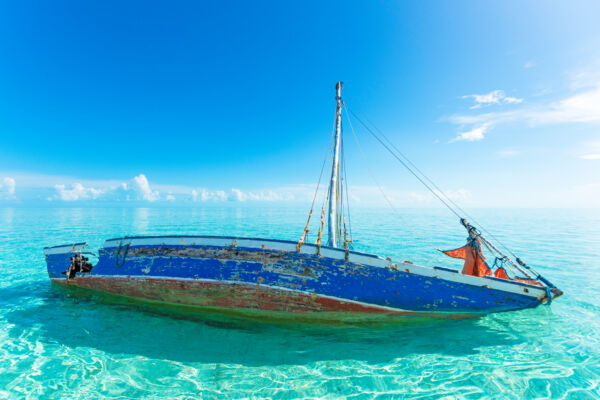
Although they typically never reach a particularly impressive stature due to the limited soil and water in the Turks and Caicos archipelago, several types of spectacular hardwoods are found in the islands, including lignum vitae, and Jesuit bark. These woods, although unmatched in terms of weather resistance and strength, were typically only used for blocks, dead-eyes, and fittings due to their hardness and the difficulty in working them.
Sails, and to the extent they were used, metal fittings, were either salvaged or imported.
Rigging and Equipment
Caicos Sloops are single-mast boats, and are relatively simply rigged with only a mainsail and a head sail.
Many of the sloops built in the last couple of decades have had aluminum masts in place of the original wood.
Events Celebrating the Caicos Sloop
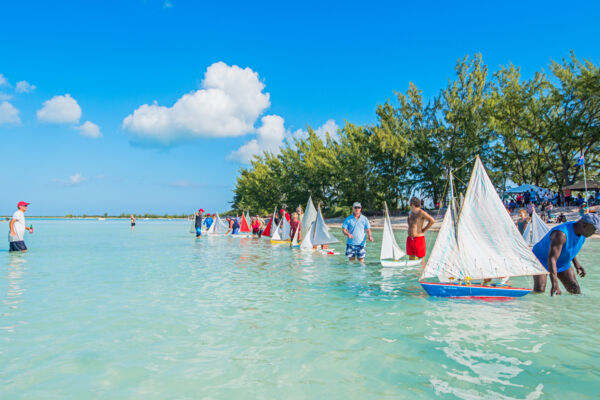
The South Caicos Regatta is the only Caicos Sloop race. Commemorating the official visit of Queen Elizabeth in 1967, this celebration has taken place every year since.
The Valentine’s Day Cup on Bambarra Beach, Middle Caicos, is a model sloop race and typically sees dozens of miniature Caicos Sloops. The competition does not strictly require that models be of the Caicos Sloop design, yet most are. The model boat hulls are often carved from solid blocks of wood from the gumbo limbo tree (Bursera simaruba), which is a very soft and lightweight wood. The event is fun for all ages, and vendors serve traditional Turks and Caicos cuisine.
Although not centered on Caicos Sloop, the annual Fool’s Regatta on Providenciales often attracts a few of the boats from the nearby settlement of Blue Hills.

